Kione began her foray into fabrics in 2013 when she purchased a stack of colourful fabrics, “I began making small hand-sewn patches in contrasting colors. I also made my first machine-pieced quilt around that time. These days I make improvised or geometric patchwork compositions, sometimes referencing traditional quilt block patterns.”
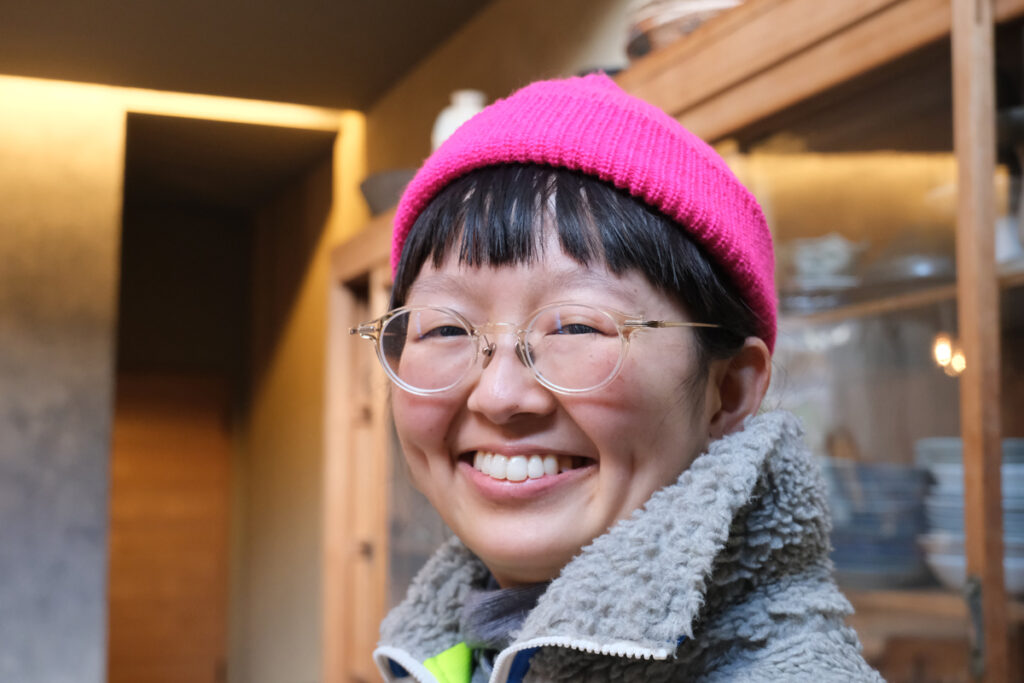
While looking around the studio I understand a sense of order and chaos, vibrancy and subtlety, control and freedom.
All of these contradictions, which can be seen in Kione’s patchwork arrangements, are also reflected in her influences. “I enjoy the colors in Hilma af Klint’s work, especially in the series The Ten Largest. In terms of textile art, I appreciate the compositions in the works of Bauhaus artist Gunta Stölzl. Conceptually I’m drawn to Russian Constructivism and some of the garment designs from that time.’
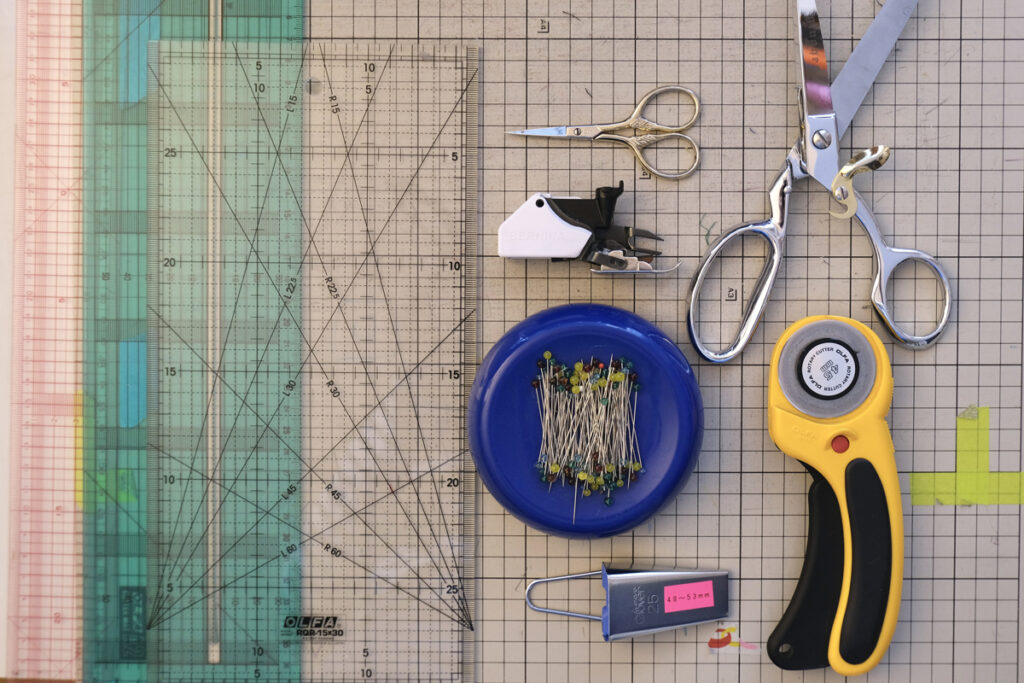
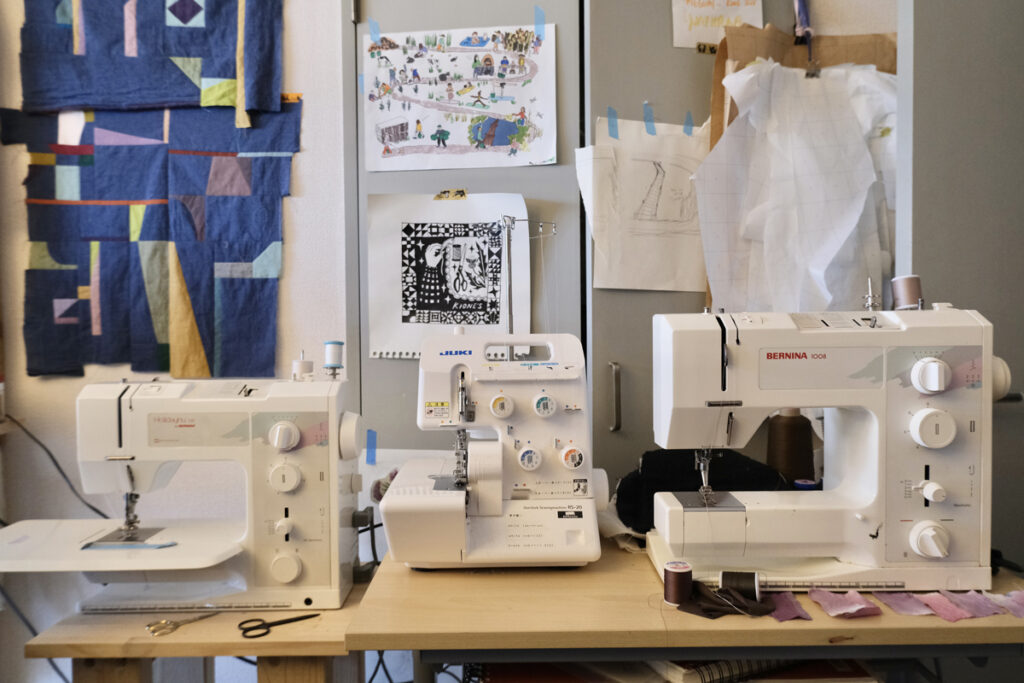
ーHow has your time in Kyoto impacted your craft?
Being in Kyoto, I’ve learned more about the traditional industries here through my day job as a research coordinator at the Center for Innovation in Traditional Industries at Kyoto Seika University. I’m sure all that I’ve seen through my research at work has been processed in my brain.
I live in a nice, quiet residential neighborhood. I like that I can see mountains from my balcony, and it’s a quick walk to a trailhead. I’m able to focus in my studio, because it’s a fairly quiet environment. I think I appreciate the proximity to rivers and mountains whilst having some of the conveniences of living in a city.
I have access to different fabric suppliers here. I also use some deadstock shirting from Hyogo Prefecture, which is a new discovery since moving to Kyoto. I also use a lot of yarn-dyed cottons and some garment-dyed cottons from the U.S. Lately, I’m interested in thrifting shirts and secondhand garments to then deconstruct and incorporate into patchwork.
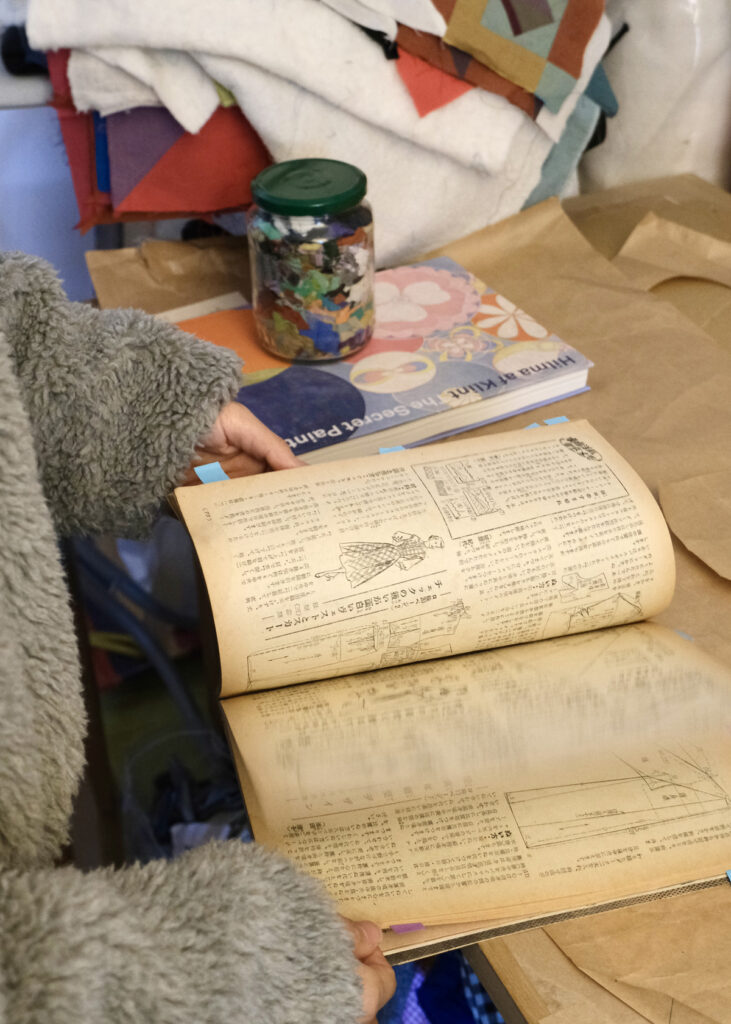
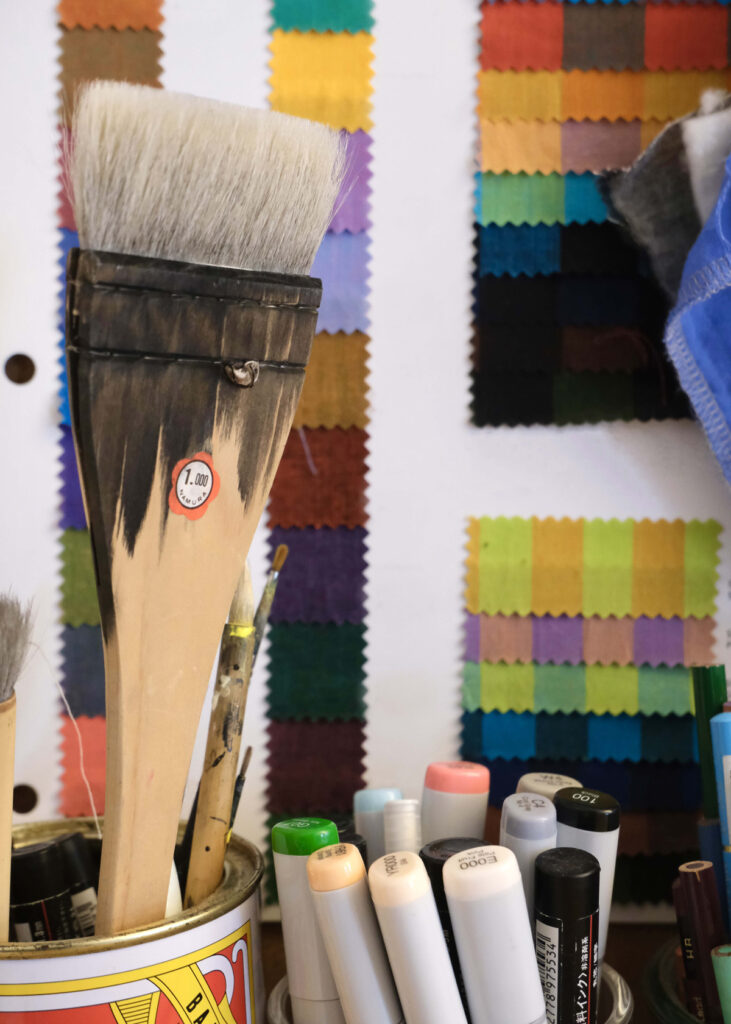
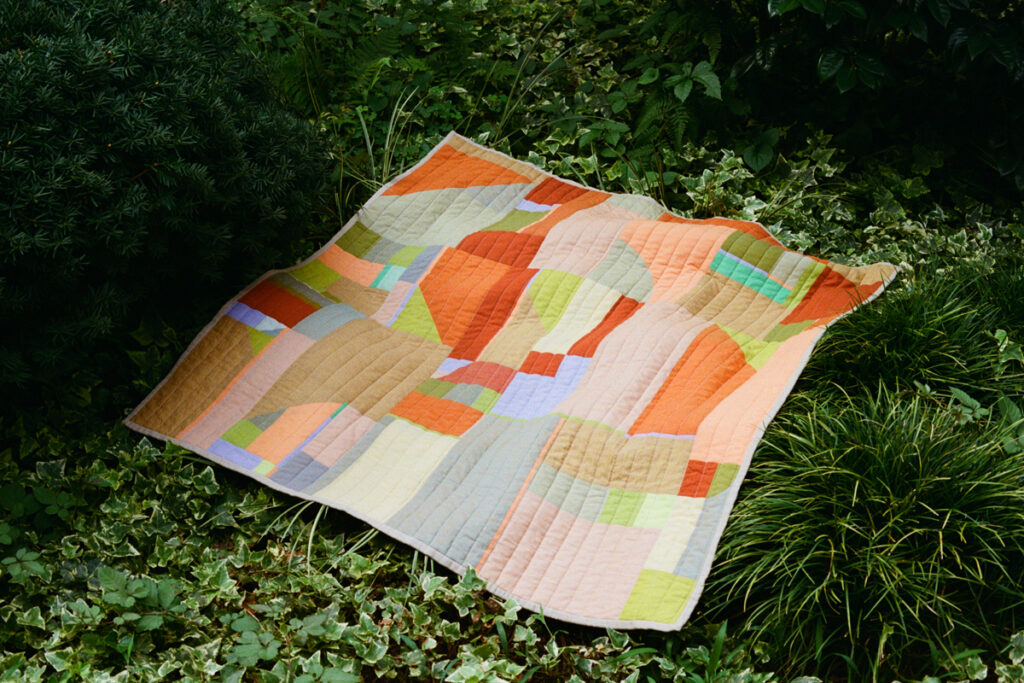
Photography: Go Tanabe
ーWhat is the best piece of advice you have been given, and how has it shaped you as a creative?
I was told to take calculated risks. I appreciate this advice because it means that I need to foster an awareness of my body of work and experiment within its context. It’s easy to get lost in the process and forget to take a step back, but I am always trying to add a blip or an edge to the aesthetic of patchwork and quilting that have a long tradition and are often associated with safety and comfort.
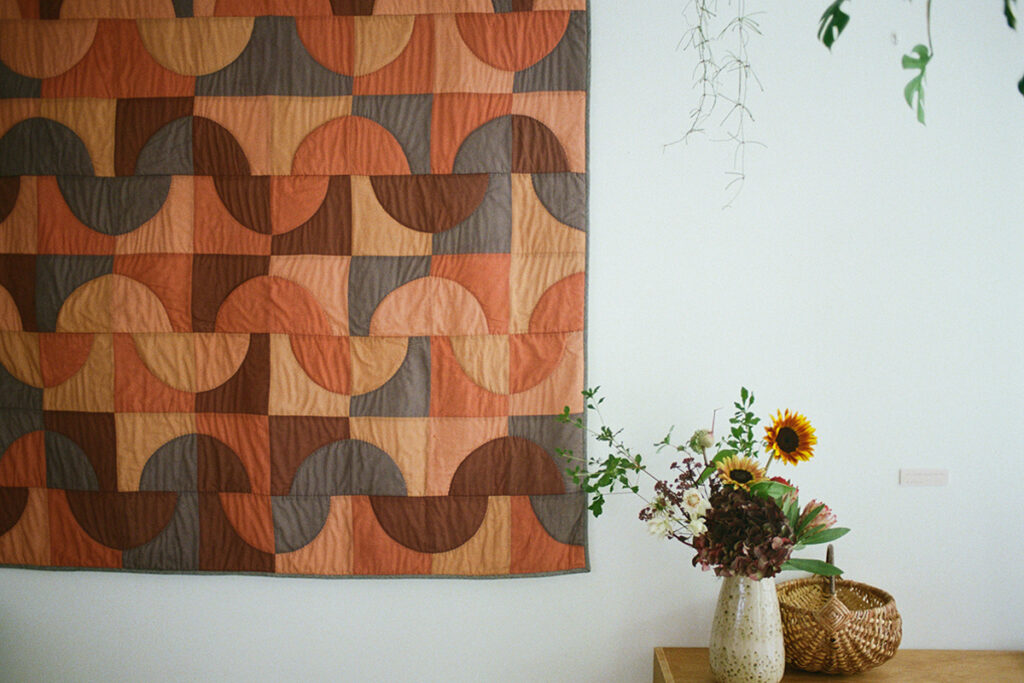
Photography: Go Tanabe
Website https://www.kionek.com/
Instagram: https://www.instagram.com/kionek/











